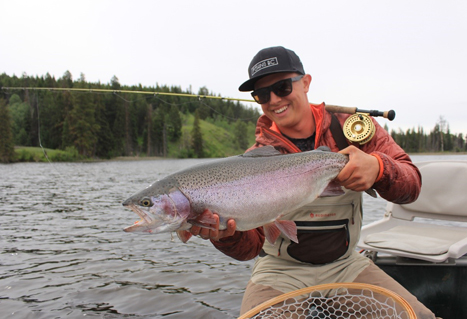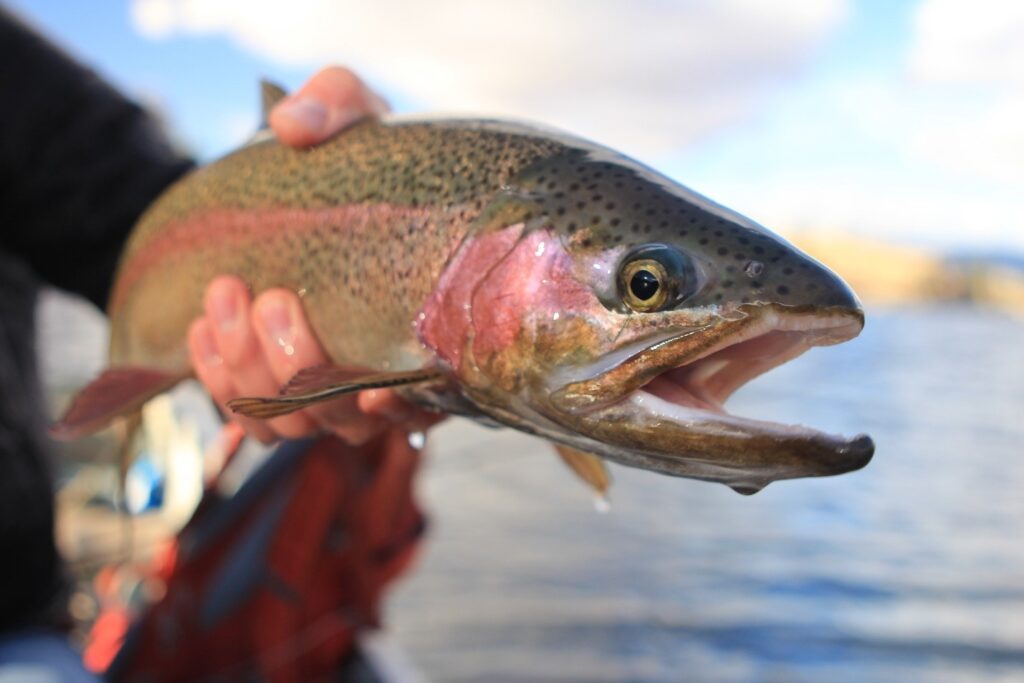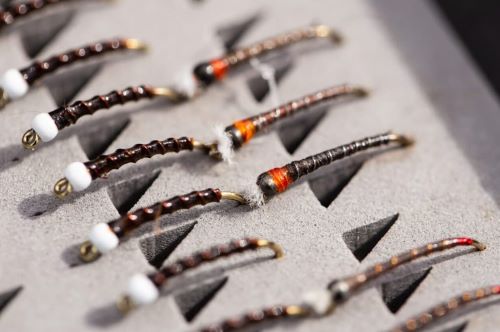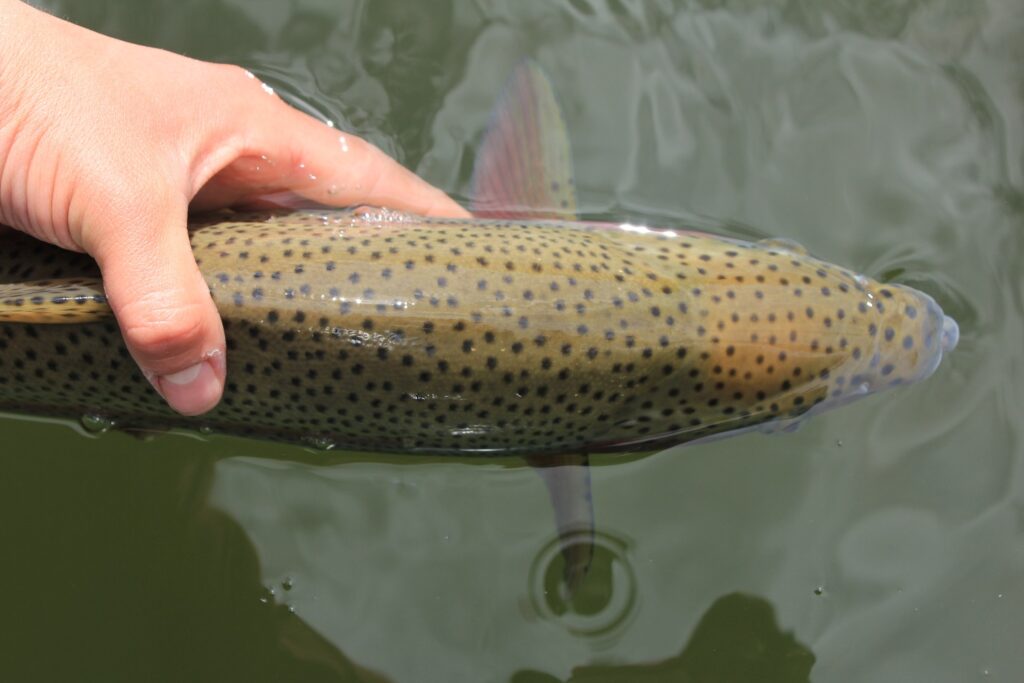By the beginning of April, I usually start to see ice-free, open water along the shorelines of some of the lower-elevation lakes around Kamloops. Good fishing will happen over the next few weeks.
Fly-Fishing Patterns to Use After Ice-Off
Once the ice is off a lake, activity begins in the shallows. These areas warm up the earliest, stirring aquatic insect activity and attracting hungry trout. Slow-moving leeches are some of a trout’s first food sources. Leeches may range from one to six centimetres in length, and come in a variety of different shades and colours. With a lower metabolic rate from the still-cold water, trout will usually not be actively pursuing faster-moving prey. My go-to set-up is either a balanced leech pattern under a strike indicator, or a leech imitation slowly stripped in on a sinking line.
What is spring turnover?
Within usually the first week of ice-off, small, eutrophic (nutrient-rich) lakes undergo a process called “turnover.” As the surface waters warm, they reach their highest density at four degrees Celsius – and sink. This sudden sinking of dense water to the bottom causes the stratified lake water to stir up. The lake becomes very turbid, and in some cases unfishable, with lots of organic matter suspended throughout the depths. But turnover re-distributes oxygen within the water column, and is necessary for the lake to continue to function properly. Some of these kinds of lakes will turn over once in the spring and again in the fall, but most only experience a spring turnover. Other low-nutrient (or oligotrophic) lakes undergo no turnover at all.

Typically, lakes will finish turning over in about a week, unless heavy winds or bad weather prolong the process by keeping a lake’s waters stirred-up and murky. Leech patterns (and dumb luck) are often what I turn to during turnover.
Stillwater Fishing After Spring Turnover
Once lakes have stabilized and cleared, the fishing will get better and better as the water temperature rises. Fishes’ metabolisms will increase, and they must feed heavily to match it. Fish will follow the increasing levels of insect activity, starting in the shallows and moving deeper as the season progresses.
Chironomid fishing really begins to pick up a few weeks after ice-off. You will typically be imitating the pupal form of these non-biting midges as they move up the water column to become flying adults. Most anglers fish chironomid patterns statically under a strike indicator, and ensure their fly is within 30 to 60 centimetres (a foot or two) of the bottom. When the lake surface is calm, try to observe where adult chironomids are emerging: that’s where the main hatches are occurring. Since, in some cases, chironomids will only hatch in a very small area, it’s crucial to present your fly where they are emerging and fish will be feeding the heaviest.

Early-Season Fly-Fishing Patterns
Chironomid pupae vary greatly in colour and size. Smaller chironomids (often in the 16 to 18 pattern size) hatch earlier in the season, followed by larger chironomids. Matching the right size and colour is often key in a successful day of angling; have a wide array of patterns.

Mayflies, damselflies, dragonflies, and scuds are other aquatic invertebrates that can also be encountered. The variations in patterns to match these insects are endless. I often keep vials with 70% alcohol to preserve insects found in the stomachs of trout, and base my later fly-tying on an exact insect.
Prepare During Winter for Spring Fishing Season
Throughout the winter, I spend a lot of time tying fly patterns. I look at photographs of aquatic insects, and reflect on notes I have taken about the locations, fly patterns, and times that produced fish for me. It is handy to own a good map book as well, or take advantage of the internet to explore new lakes. Another awesome tool at our fingertips is the Society’s lake stocking reports, found here.
Purchase your freshwater fishing license online here, and have a good look through the non-tidal fishing regulations to see if there are any changes that affect your favourite fishing spots.
Like other anglers, I am extremely excited about the stillwater fishing season. Good luck to everyone; spring fishing isn’t far off now!
Author: Brennan Lund
Photo Credit: Brennan Lund
Brennan spends around 200 days a year on the water, whether it’s steelheading on Vancouver Island, fishing trophy trout lakes in Kamloops, or guiding fly fishing in the East Kootenays for giant bull trout and cutthroat trout.
Follow Brennan on Instagram
